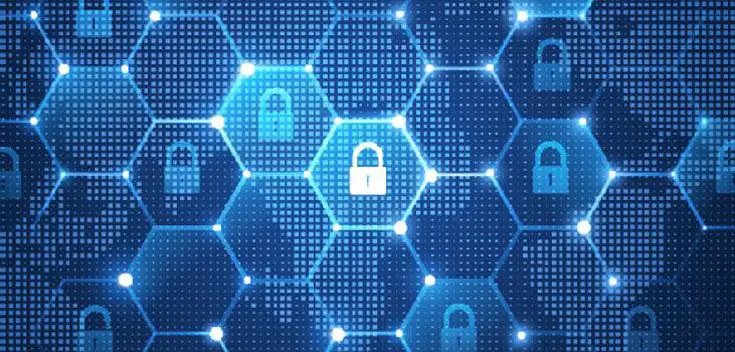There has been an exponential growth in data volume due to the growing use of SaaS, IaaS, and PaaS in the last couple of years. Data today flows from devices to on-premise systems, cloud applications to external third parties and business partners. As a result, enterprises face various technical, legal, and process challenges to secure data based on their location or infrastructure. This has caused traditional perimeter security solutions, legacy systems to fall short, and cracks within their systems, applications, and business processes that can be exploited, leaving the organization exposed to the risk of cybercrimes. Changing the focus to more data-centric is the only last line of defense that will guard any organization from compromised data. However, the looming fear of data breaches, compliance mandates, and the changing threat vectors has made the speed of deploying security solutions extremely critical.
Traditionally, the long deployment cycles for security solutions cover the policy creation and administration, end-user training and awareness, try-and-test model to reduce false positives, tweaking and updating the policies. All of this is to ensure business continuity that increases the risk of bad actors stealing sensitive data. Hence, the damage would already be done by the time the IT team deployed the security solution.
It is crucial for security solution providers to focus on a time-to-value approach. Applying modern automated deployment techniques that require little or no IT administration can remove the need for user participation, policy creation, and management overheads, leveraging the visibility around data created by other data-focused solutions like DLP, Secure gateways, CASBs, etc.
Let's take a deeper look into why automation is a crucial aspect of data-centric security.
Reason #1: Consistent and Accurate Data-centric Security
It is practically impossible to get all the users to define the sensitivity of every data asset. Even if that works out, it is essential to remember that there is still significant dependence on user discretion. It could lead to users incorrectly assigning data security policies. According to IDC's Data Protection and Privacy Survey of 2021, many organizations applied stringent security policies to data that didn't require it and no security policies to sensitive data like Intellectual Property, Contracts, Research data, etc.
Removing the user from the context and providing an answer to "What to protect" through automation based on the visibility created by other data-focused solutions brings a sense of consistency to the system, ensuring that all the data adheres to the enterprise's security policies. As a result, there is minimal scope for human error. While manual data protection is error-prone and liable to produce false positives, automation removes, or at least reduces, the possibility of any such errors.
Reason #2: No Impact on User Productivity
By setting policies and rules based on the data trends of the organization, it is possible to automate the discovery, classification, and data security processes for both incoming and outgoing data. As a result, the IT team doesn't need to monitor the data constantly, nor does it require end-user participation, thus preserving their productivity.
Well-implemented automation processes do not hinder user productivity but enhance it. Automating the security policies to the data flowing from one device to another immunizes the data, allowing it to be visible even as it travels outside the organization. This makes the data suitable for external collaboration, boosting user productivity even as workplaces shift from office to home and even enter a hybrid model.
Reason #3: Less Administrative and IT Overheads
Earlier, managing an organization's security policies was a manual process, which required complete administrative intervention. Not only was it an arduous process for the administration department, but it also affected the operations of the rest of the organization due to the lag in access protection requirements. As a result, overly permissive policies would be implemented, defeating the very purpose of data-centric security.
Automation helps an organization determine the right policies to be applied to data at a large scale as it gets fetched from storage media such as SAP, SharePoint, Salesforce, etc. Additionally, automation helps an organization cope with the ever-changing privacy requirements to ensure compliance and ease of policy updates.
Reason #4: Scalability
Automation allows an organization to efficiently address business dynamics, e.g., onboarding new joiners, departing employees, transfers, and external collaboration. Eliminating the overheads of defining security policies beforehand for each business case and automatically federating them at runtime in real-time in the context of the storage and collaborating application being used allows an enterprise to implement and adopt the solution at scale and, in true sense making the security seamless and transparent to the end-users.
Using automation with artificial intelligence makes it possible to automate the platforms to audit the process with prebuilt analytics. Using Digital Rights Management (DRM) solutions with auditing capabilities enables active tracking of data usage. This gives the security teams the awareness of sensitive data use and a better context of unauthorized activities to make well-informed policy decisions.
Conclusion
When it comes to managing elaborate data privacy systems, it has been commonly observed that the users are the weakest links. It is crucial to reduce user intervention and provide an unbiased monitoring system for efficient data security. Taking the user out of context and protecting the data at source automatically via integration with other security tools or mail and messaging systems or storage and collaboration systems will allow enterprises to successfully implement and adapt their data security initiatives.
In a nutshell, automating the data-centric security processes has the following advantages:
- Ability to easily track data and instantly spot any malpractices.
- No toll on productivity as any manual intervention happens only in case of an untoward event.
- Achieve scalability and broader user adoption due to lesser overheads around end-user awareness and training


